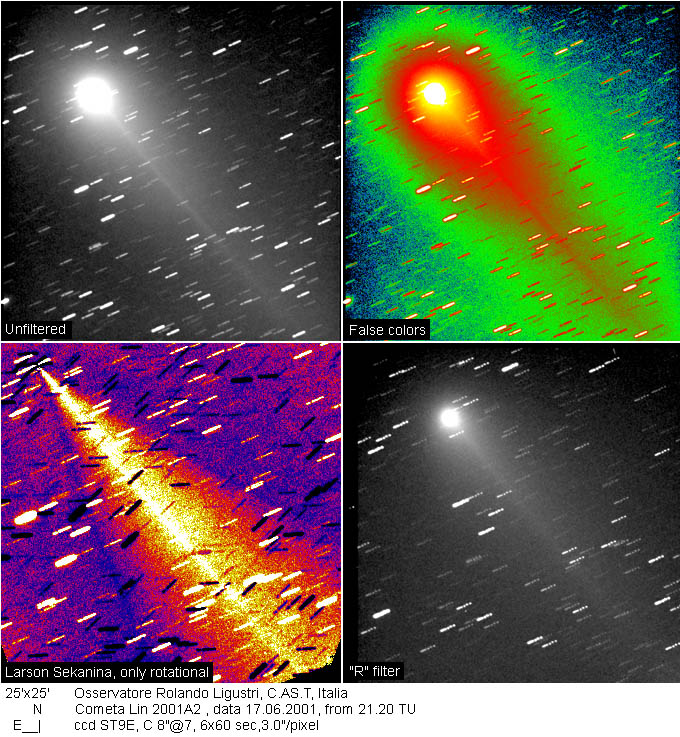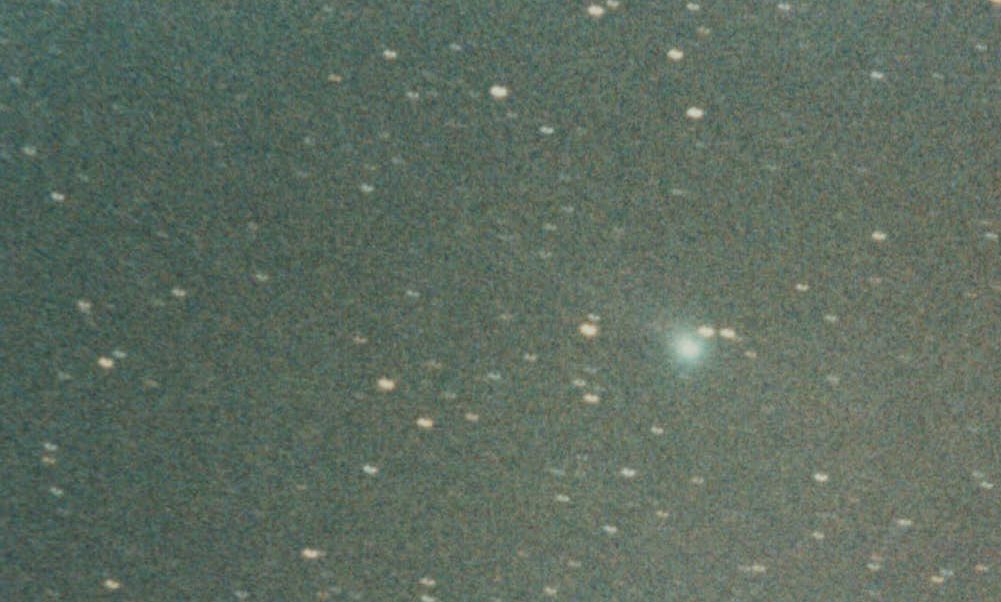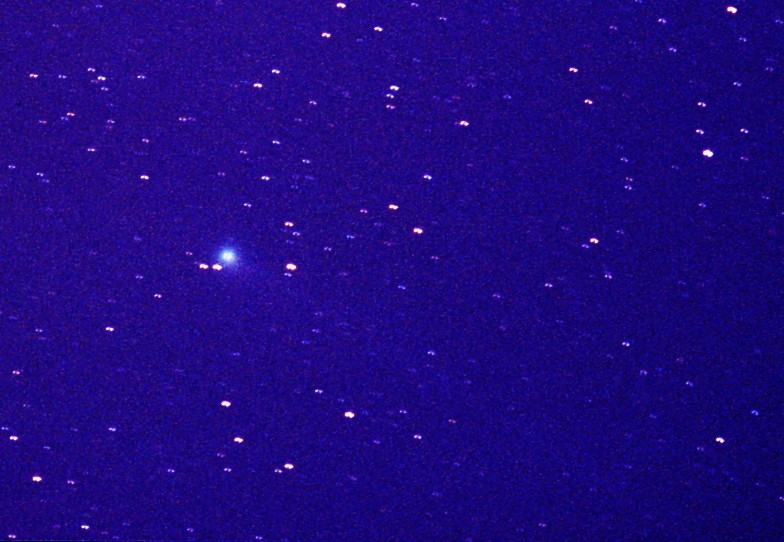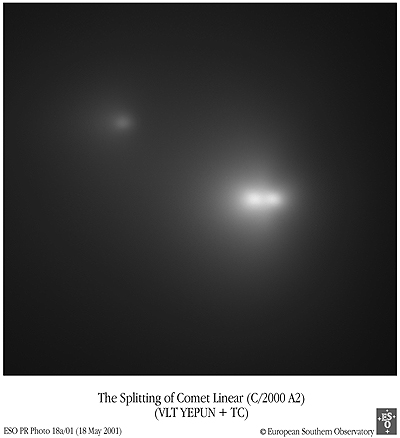 |
| Cometa Linear / 2001 A2 |
|
Questa peculiare cometa, la 2001 A2 (anch'essa scoperta dal sistema automatico Linear), si rende protagonista per la frammentazione del suo nucleo, fenomeno che ha prodotto un outburst luminoso. L'aumento di luminositÓ di alcune magnitudini, rispetto al valore che la cometa dovrebbe avere a causa della sua posizione geometrica, la rende un oggetto molto luminoso, al punto da rendersi visibile ad occhio nudo dal cielo dell'emisfero meridionale.  Durante il mio soggiorno in Sudafrica, Zambia e Zimbabwe nel periodo 20-27 giugno 2001, a cavallo dell'eclissi totale di sole del 21 giugno, ho avuto modo di osservarla al binocolo e addirittura ad occhio nudo. Insieme all'amico Alberto (astronomo di Bologna) l'abbiamo osservata e fotografata dallo spazio recintato dell'albergo nel quale ci trovavamo, ad alcuni chilometri dall'ingresso meridionale del Parco Nazionale Kruger, in Sudafrica (presso il confine col Mozambico).  Nonostante fossero accese le onnipresenti luci a "palla" dell'immenso giardino dell'albergo, incubo di noi astrofili anti inquinamento luminoso, Ŕ stato comunque possibile vederla anche ad occhio nudo nel periodo antecedente l'alba. Peccato che non disponessimo di un ccd, altrimenti avremmo potuto fornire al presidente Ligustri valide misurazioni dei suoi parametri (magnitudine, diametro della chioma e lunghezza della coda).  L'immagine di Alberto Dalle Donne (e la mia) non sono belle, in quanto l'astro fu ripreso con uno strumento piccolo, di focale corta, con tanta umiditÓ nell'aria, ma Ŕ comunque una testimonianza. Vi propongo anche un'immagine presa del Telescopio Yepun dell'ESO, dove si nota chiaramente che il nucleo cometario si Ŕ frazionato. C'Ŕ anche il testo della comunicazione originale dell'ESO.
Alla fine di aprile 2001 si Ŕ appreso che la cometa si era spezzata; il testo della comunicazione
Ŕ il seguente:

Testo della press-release dell'ESO:
|
Breve storia delle comete presenti nel sito |
Cometa Linear 2001 A2 |
Fotografia, ccd e ricerca |
Articoli
|
